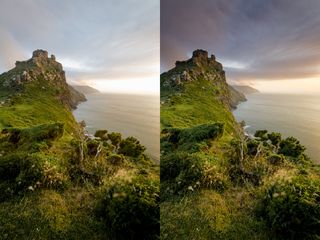5 essential photography filters (and why you can't live without them!)
Photo filters every photographer should own
Essential photography filters: 4. Graduated neutral density filters

What's it for?
Balancing the exposure between a bright sky and a darker foreground, particularly in landscapes and sunrise/sunset shots.
What's the technique?
To use our previous analogy, a graduated neutral density filter, or ND grad, is like a pair of sunglasses with dark glass at the top and clear glass at the bottom.
By placing the dark part of the glass over a sky that's much brighter than the scenery below, and lining the transition up with the horizon, you can ensure a balanced exposure.
ND grads come in several different strengths, and with different transitions between the dark and clear areas.
For most uses a two-stop grad, also known as a 0.6 or ND4 grad, is a good option, but for shooting sunrises or sunsets with the sun in the frame, you may need something even stronger, such as a three-stop (0.9 or ND8) grad, to give a more balanced exposure.
Get daily insight, inspiration and deals in your inbox
Get the hottest deals available in your inbox plus news, reviews, opinion, analysis and more from the TechRadar team.

There are two main types of transition between the dark and clear areas: hard or soft. Hard grads go from clear to dark very suddenly, so are best for subjects with a clear, uncluttered horizon, such as seascapes.
Soft grads feature a much more gradual change from clear to dark, and are suitable for landscapes where there are trees, mountains or buildings above the horizon.
Once you have attached the filter holder to your lens via the lens thread, you simply slide the ND grad into the slot closest to the lens. You then have to move the filter down while looking through the viewfinder (or at the LCD in Live View) until you see the whole sky darken.
The critical area is just around the horizon - you'll need to fine-tune the position of the filter so that the transition between the clear and dark areas lines up with the horizon, otherwise you'll end up with a very bright strip of sky or a very dark strip of land near the horizon.
Round or square?
Because you need to move the filter up and down, the square filter system is the only real option for ND grads.
Current page: Graduated neutral density filters
Prev Page Neutral density filters Next Page Strong neutral density filters